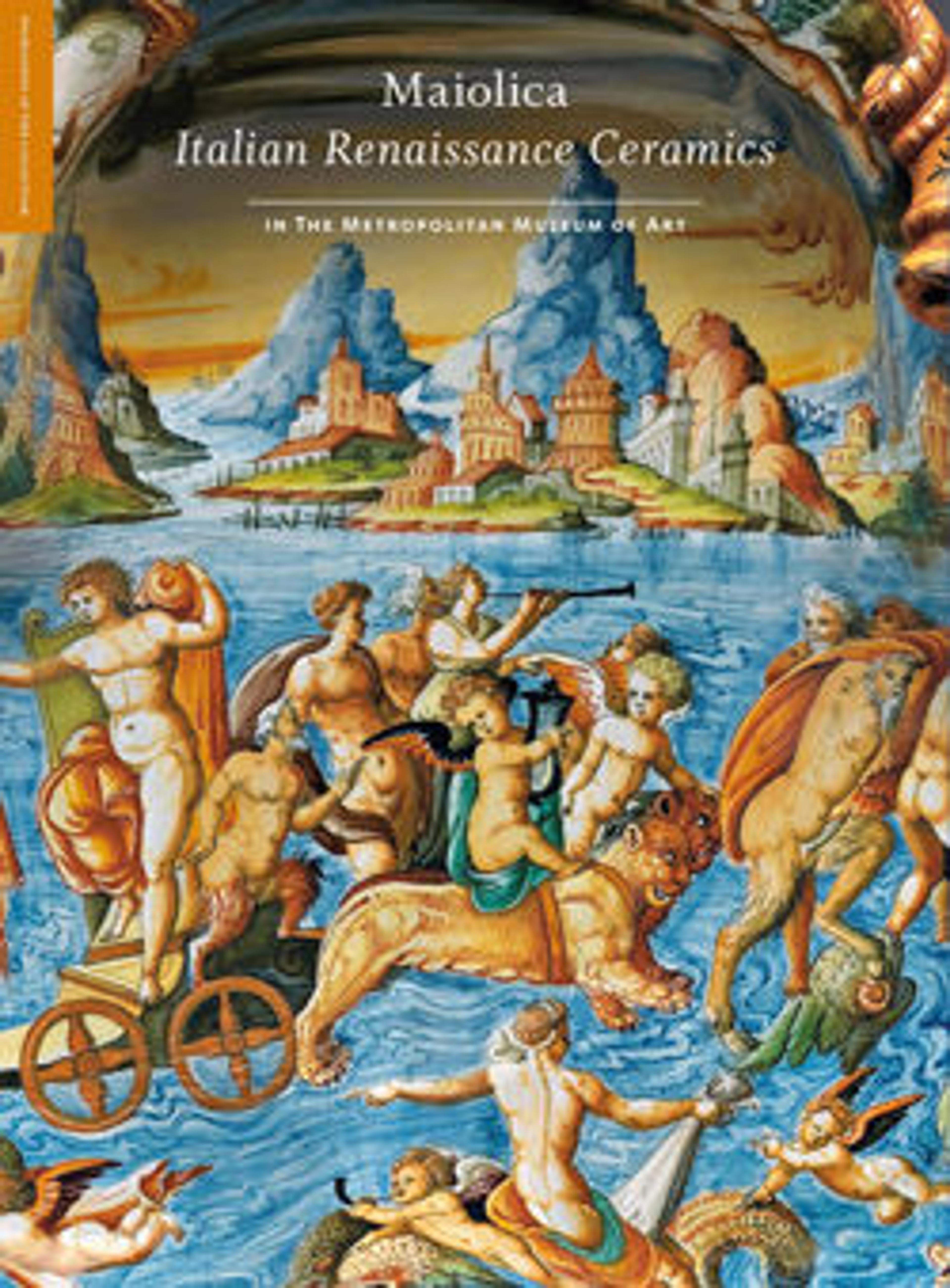Deep Dish
This dish (or brasero) comes from a lavish ensemble of tableware created for the delle Agli family of Florence. The family's arms, featuring a rampant wolf, appears at the center. (The purplish color is as close as the potters could get to the prescribed red.)
The arms are ringed by garlic, a playful reference to the consonance between the family name and the Italian word for garlic (aglio). The scrolling vine pattern of the border is recognizable as bryony.
The arms are ringed by garlic, a playful reference to the consonance between the family name and the Italian word for garlic (aglio). The scrolling vine pattern of the border is recognizable as bryony.
Artwork Details
- Title:Deep Dish
- Date:1430–1460
- Geography:Made in Manises, Valencia, Spain
- Culture:Spanish
- Medium:Tin-glazed earthenware
- Dimensions:Overall: 18 3/4 in. (47.6 cm)
- Classification:Ceramics
- Credit Line:The Cloisters Collection, 1956
- Object Number:56.171.152
- Curatorial Department: Medieval Art and The Cloisters
More Artwork
Research Resources
The Met provides unparalleled resources for research and welcomes an international community of students and scholars. The Met's Open Access API is where creators and researchers can connect to the The Met collection. Open Access data and public domain images are available for unrestricted commercial and noncommercial use without permission or fee.
To request images under copyright and other restrictions, please use this Image Request form.
Feedback
We continue to research and examine historical and cultural context for objects in The Met collection. If you have comments or questions about this object record, please contact us using the form below. The Museum looks forward to receiving your comments.
